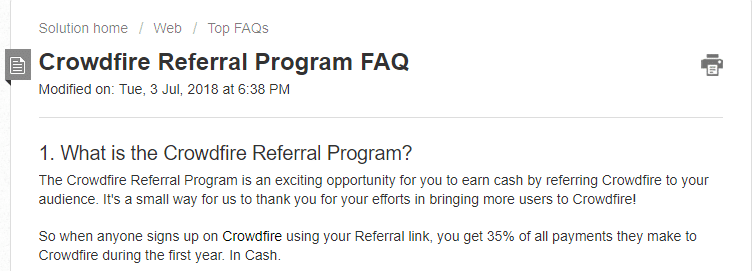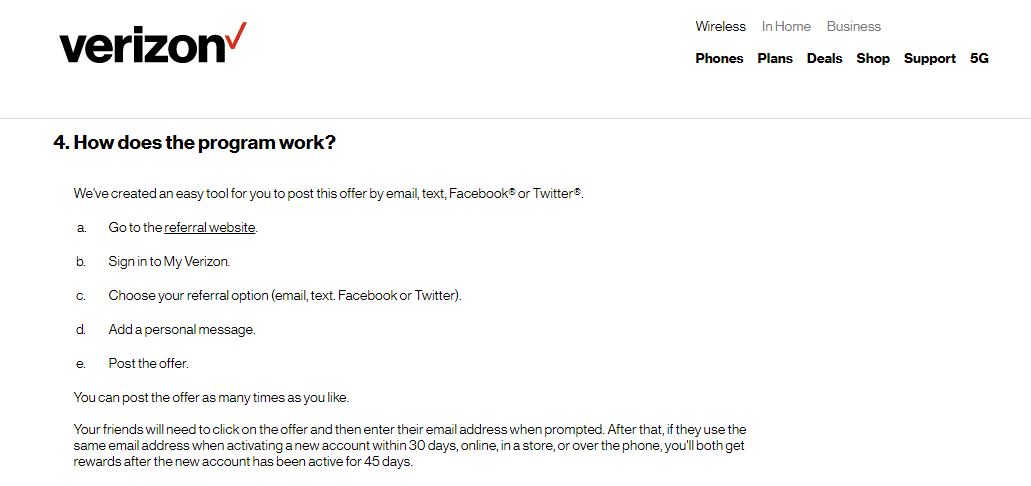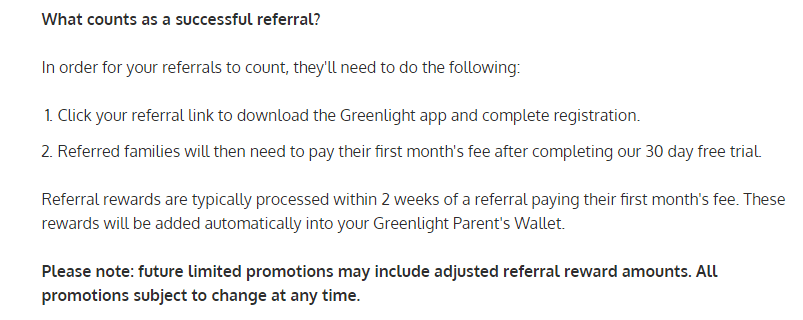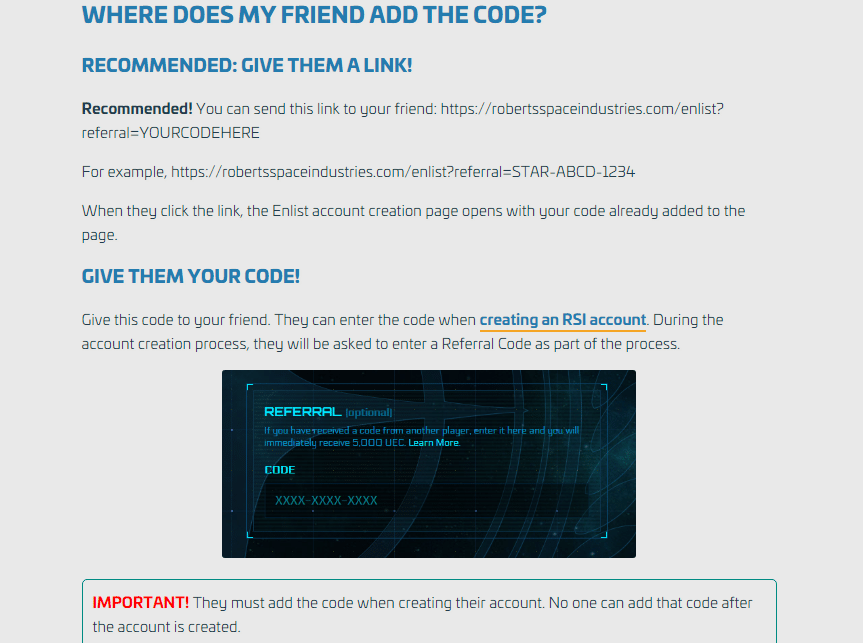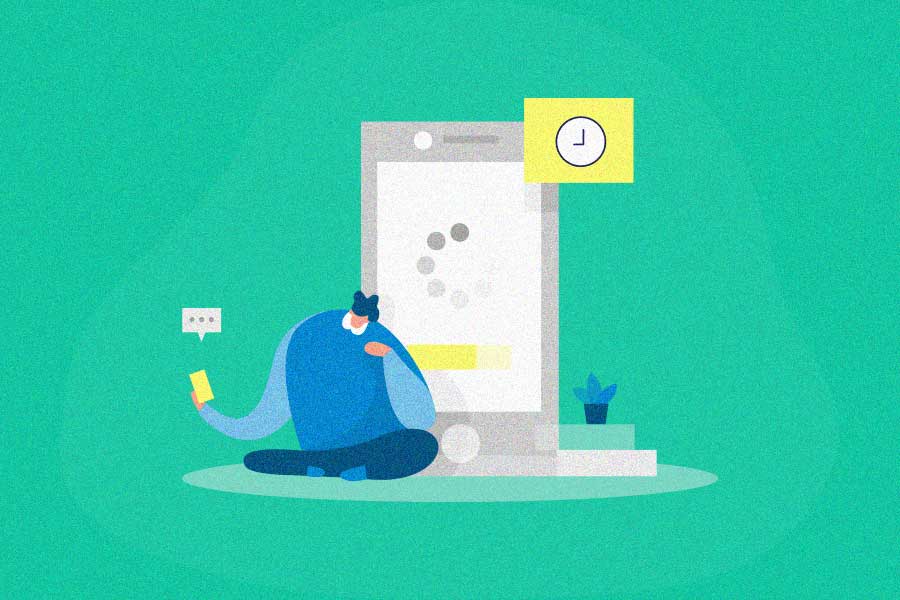Ready to launch a referral program and start scaling your business? You’ll need to create a referral program FAQ. Your existing customers are your best advocates. Make to make sure they have all the information they need to share with their friends – and get rewarded for it.
One of the best ways for your referral program to run without any hiccups is to build out an FAQ page for your referral program.
4 reasons why you should create a referral program FAQ
A referral program FAQ (refer-a-friend FAQ) is essential to meeting your goals because it helps make the referral process as frictionless as possible.
Here are some specific reasons why you should spend time creating a FAQ section for your referral program.
1. A referral FAQ sets expectations and establishes conditions
When you start your referral program, you might get flooded with questions regarding how your referral program works. (What ways can someone share? How soon can they get their reward?)
A referral program FAQ defines the scope of your referral program, and lets advocates know how exactly to refer their friends.
The FAQ also states if and how customers will earn referral incentives, including the specific conditions that must be met before a customer can earn a reward.
2. You can prevent clogging customer support
The less time customer support is burdened with the same questions, the better. A referral FAQ can save you from a ton of customer support inquiries, keeping not only your customers happy, but also your team.
3. It better equips members to promote your brand
Even if you pour all of your time into creating the best user experience for your referral program, your advocates might give up if they come across a stumbling block and can’t find an answer to their question.
Creating an FAQ or knowledge base removes the most common barriers to referring, and reduces the chances your advocates will lose interest.
4. Refer-a-friend FAQs can increase overall customer satisfaction
Answering a customer’s questions in a referral FAQ shows you care about their time and happiness. It provides a better overall experience with your brand. And when your customers are fully satisfied, they’re even more likely to refer friends.
What should you include in your FAQ?
The best FAQs are tailored to the audience. You need to anticipate the questions they’re most likely to ask based on the products or services you sell, the rewards you offer, and the overall your referral program structure.
The questions below are some of the most common questions we’ve heard customers ask about referral programs. Under each question, we’ve included the information your answer should provide.
We also added a few examples from real-life referral program FAQs. Choose the right questions for your own program, and tailor the wording based on your needs!
Basic questions
These are the common questions people have when they sign up for a referral program. You may be asked these when someone wants to sign up or when they’re just starting to look into joining your program.
1. “What is [the name of the referral program]?”
Consider starting off your referral program FAQ by answering this question. Give a brief overview of your program and any rewards you’re offering.
Try one of these phrases to answer, all of which are commonly used in real referral FAQs:
“(Program) lets you refer friends and earn (reward).”
“(Program) rewards you for sharing with your friends.”
“(Program) is a small way to thank you for sharing us with your friends.”
Check out this example answer from the Crowdfire referral program FAQ:
2. “How do I refer a friend?” or “How does this referral program work?”
Every referral program FAQ needs to answer this question. It’s a great immediate follow-up to the question above. Or, you can skip right to it and have it as an awesome first question for your refer-a-friend FAQ. To answer this question, walk your customers through the referral process in detail, emphasizing how easy your program is to use.
- What ways can your customer refer a friend? Via email? Social media?
- Do you use a referral link or a referral code?
- If you haven’t listed your advocate and friend rewards in the previous question, and you’re offering rewards, list them here.
Here’s how Verizon answers this question in their referral FAQ. Notice how they list their available referral options: email, text, Facebook or Twitter. Also, they call their referral program an “easy tool!”
Rewards and eligibility
Though having a general FAQ about what your program involves is important, many people want to get right into the rewards. Therefore, you should have a few FAQs focused specifically on the reward and how a customer can earn it.
1. “What rewards can I earn?”
Are you offering discounts, store credit, free products, cash, or something else as a referral incentive? You can always dedicate a specific question and answer to cover the rewards you offer.
Trying to decide which rewards you’ll offer? Learn more about choosing referral rewards.
2. “Who can I refer to earn rewards?”
Let your customers know what counts as an eligible referral toward earning their reward.
- Can your customers only refer friends who have never made a purchase from your brand (new customers)?
- Are people who have used your subscription service before eligible referrals if their subscription is currently inactive (as an incentive for the referrer to help bring them back on board)?
- Can customers only refer friends with a unique email address, that no one entered to refer them before? Can they enter an email address of someone who was referred before, but who didn’t yet make a first purchase?
- Or can any friend use a referral code or link to earn rewards for the person who referred them (and/or for themselves), regardless of whether they’ve made a purchase before?
3. “What conditions must be met for me to earn the reward?”
In most programs, your customer referrals will have to make a purchase in order for them to earn a reward. But does a friend’s purchase have to be a certain amount? Do they have to buy a quarter or annual plan? Let your customers know the exact conditions their referrals must meet.
If they know the reward conditions, your customers are more likely to recommend potential customers who will be interested in your product (and who will therefore help them earn the reward).
In this example from Greenlight, referred friends must pay for the first month of their subscription for a referral to be successful. Successful referrals earn both the referrer and friend $10.
4. “How do I track my referral status?”
Include this if you have a referral dashboard where customers can check the status of a referral.
Define what each status means. Usually, you’ll have a “pending” stage, after the friend receives the referral but before they have made a purchase, and a “completed” stage, after they have made a purchase.
This is how SugarSync answers a similar question:
5. “How can I tell if a friend has used my code?” or “How can I tell if I have earned a reward?”
Your customers will be eager to know when their friends have made a purchase. Let them know how the awaited notification will come to them in this answer (usually it will be via email or via a message in your app). For example, they may receive an email stating that their friend made a purchase using their referral code, and that their reward will be sent to their dashboard within a few business days.
6. “How can I track my rewards?” or “How many referrals do I need for each reward?”
If you’ve set up tiered rewards and have a reward tracking system, this is an especially important point to cover. Tell your customers how many qualifying referrals they need for each subsequent reward, how to track the number of referrals they have made, and how they will know when they have earned each reward.
7. “How will I receive my reward?”
Will customers receive free coupons via email? Discounts via text message? Cash via PayPal? Gift cards or free products in the mail? Some other combination of reward and delivery method? Let them know!
8. “Is there a limit to the number of people I can refer?” or “Is there a limit to the number of rewards I can earn?”
State any limits of referrals or rewards in your referral program. Also give a way for your customers to know when they have reached their referral limit and can no longer receive any rewards, and whether the limit only applies for a certain period.
9. “Do referral rewards expire?”
If customers have earned a discount-based or credit-based reward for referring, they’ll want to know how long they have to take advantage of that reward.
Are the rewards available for redemption whenever the customer chooses, or does the reward expire after a certain time?
Referral codes and links
Some people will want to know how their referred friends will be tied back to them. So it’s wise to address this concern in your referral program FAQ. Here are common referral link and referral code questions that get asked.
1. “Do you have a referral code / referral link?”
Referral codes and referral links make it easy for customers to refer their friends, and for your brand to track referrals. Customers can send their unique codes and links via email or other messaging., while your business can easily trace referrals back to the customer. Include how your customers will receive and send out their referral code or link.
2. “Where can I find my referral code/referral link?”
Share whether customers will be automatically sent a referral code or link, or if they have to generate one on their own. Furthermore, how can a customer retrieve their link or code if they lose it? Answering these questions will help customers know how to start referring others right away.
3. “Where can friends enter my referral code?”
A referral code won’t be of much use if friends don’t know where it should go. Do new customers enter it at the checkout or on a specific page?
Here’s an example answer from the Roberts Space Industries referral program, which uses both links and codes to make referring simple.
4. “What if a friend signs up but forgets to use my link or code?” 0r “Can my friend apply my referral code after making a purchase?”
Many customers will want to know if a referral code or link can be applied retroactively. Clarifying your specific terms and conditions in your refer-a-friend FAQ can help reduce a lot of confusion later on in your program.
5. “Where am I allowed to share my referral code?”
Referral links and codes can theoretically be shared anywhere. But are there places your brand might not want them shared, so people don’t attempt to game the system by “referring” people they’ve never met or interacted with directly.
- For example, you might allow sharing on customers’ personal blogs or social media accounts, but not on public forums like Reddit.
- Briefly establish the consequences, like removal of all reward eligibility, for those who are caught abusing the system.
Yes, you could include some of this info in your “how-to” question, but setting this question apart can help prevent program abuse.
If you don’t include full terms and conditions below your FAQ, this question is a great place to include the relevant parts of your terms (and a link to your terms and conditions page). Alternatively, you could include a link to your terms and conditions at the top of your refer-a-friend FAQ page.
One final important question
While we all hope our referral programs run smoothly, it’s inevitable to hit some bumps down the road. If a customer needs to reach out to someone, let them know how they can do this and where to find help.
1. “Where can I reach out if my question wasn’t answered here?”
This should always be the last question in your referral program FAQ. After all, you can’t answer every question your customers have about your referral program. And if you did, your FAQ would become too cluttered. Point your advocates towards your customer support email, phone number, or chat.
Keeping this info at the bottom of your FAQ helps ensure that your customer support will only be called on when they’re truly needed, for more obscure and specific inquiries.
If you have a knowledge base or set of video walk-throughs, you can also include it in this section as a resource.
Key takeaways
Creating a referral program FAQ helps you set expectations for your referral program, take burdens off of your customer support staff, equip advocates to promote without worry, and increase customer satisfaction.
Be sure to establish how your referral program works, and who is eligible to be referred. If applicable, answer questions about rewards, including their conditions and limits, and the use of referral codes and links, including how to find a lost link or code.
Finally, use your last question and answer to direct advocates to customer support if the FAQ didn’t cover their inquiry. Armed with the knowledge from your FAQ, your advocates will feel empowered and be more likely to refer their friends!

